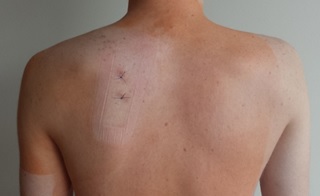Shoulder surgery
A reliable and caring treatment




Treatment of shoulder conditions, such as frozen shoulder, rotator cuff injuries, instability or damage to the joint, and the snapping scapula syndrome, is a reliable solution for patients who want relief from the discomfort associated with a painful shoulder, who fear a shoulder dislocation and experience the unpleasant ‘snapping’ of the scapula; and also those who want to be able to move and participate in professional sports without feeling any discomfort.
At our Centre we offer the following shoulder treatment options: medicines, kinesiotherapy, physiotherapy, as well as pain receptor block injections. If the above options do not yield the desired result, or when the damage to the shoulder is excessive, surgical treatment is recommended.
We favour the minimally invasive arthroscopic surgery method, which allows for faster recovery. You will have to wear a sling for 1-6 weeks after the surgery. Active physical activities may be re-started in 1-5 months, depending on the severity of your condition.
Treatment should be commenced at the onset of the first symptoms, as this helps to avoid complications, more complex surgeries and prolonged post-operative rehabilitation.
Shoulder surgery price
Shoulder surgery is the only option when conservative treatment with medicines, physiotherapy etc., proves to be ineffective. The treatment price includes a pre-operative consultation with the orthopaedic traumatologist, x-ray (CT, MRT), laboratory tests, the surgery and other equipment required for the treatment.
Doctor’s consultation
- Assessment of test results and treatment advice on the same day
- Discussion on the scope of surgery and post-surgical treatment.
CT test
- Results provided immediately after the test.
- The patient can bring the results of other tests from other healthcare institutions or have them done at the Centre in 1 day.
MRT test
- Results provided immediately after the test.
- The patient can bring the results of other tests from other healthcare institutions or have them done at the Centre in 1 day.
Shoulder arthroscopy
- No open surgery, hence faster recovery.
- Faster rehabilitation – 3 weeks (instead of 6 weeks with other methods).
- 24 hrs later you can already work on the computer.
What factors affect the price?
The prices indicated below apply to citizens of the Republic of Lithuania and the European Union.
If you are coming from another country please check the price by telephoning or sending an email.

4 reasons
for choosing us:
- The surgery can be performed during the week following the initial consultation. You can go home and travel by plane on the next day.
- The surgery is performed using a new high definition device – due to clear visualisation it achieves even better precision and speed.
- Hospital acquired infection rate – 0 in 5 years.
- The surgery is performed by doctors who provide consultations and surgeries to patients in our Centre, as well as in the country’s largest university clinics.





